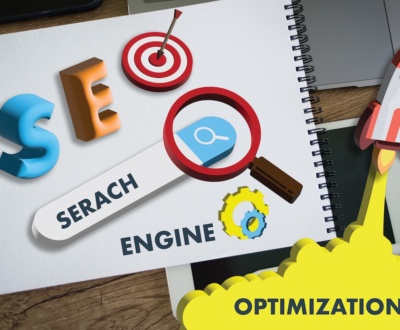How to Create a Data-Driven SEO Strategy: A 7-Step Guide for AI SEO
- November 5, 2025
- Uncategorized

Research shows that 96.55% of online content receives no organic traffic. The reason? A lack of strategy. Too many teams chase keywords or trends instead of focusing on business alignment.
An effective SEO strategy is a blueprint that connects every optimization effort to clear objectives—leads, sales, authority, and retention. According to ROI Digital Partners experts, data-driven SEO is not about volume, but value.
This guide breaks down seven steps to develop a results-focused SEO framework that aligns with modern search behavior and AI-driven discovery.
Key Takeaways
- An effective SEO strategy connects every optimization effort to business objectives.
- Keyword strategy now revolves around intent, entities, and topical authority.
- E-E-A-T (Expertise, Experience, Authoritativeness, Trustworthiness) directly influences visibility in AI-generated search summaries.
- Off-page SEO builds reputation, not just backlinks.
- Data-driven decisions help focus efforts on high-ROI content and keywords.
What an SEO Strategy Really Means
An SEO strategy is a long-term plan that connects content creation, technical optimization, and authority building to measurable outcomes.
- Strategy defines what success looks like: for instance, becoming the go-to authority for “AI SEO insights.”
- Tactics define how that vision is achieved—publishing expert guides, implementing structured data, and earning trusted backlinks.
ROI Digital Partners experts emphasize that SEO strategy should always begin with purpose. Without defined goals, keyword lists become guess work. When data, intent, and content converge, SEO becomes a predictable performance channel rather than a gamble.

The 7-Step Data-Driven SEO Strategy Blueprint
Step 1: Define Goals and KPIs That Drive Business Outcomes
SEO goals should connect directly to revenue and growth. Rather than just aiming for more traffic, focus on metrics that show real value.
Examples:
- Generate 30 qualified leads per month through organic search.
- Improve conversion rate from organic visitors by 15% within six months.
- Increase organic-driven e-commerce sales by $10,000 per quarter.
ROI Digital Partners experts recommend setting SMART goals (Specific, Measurable, Achievable, Relevant, Time-bound). Tools like Google Analytics 4 and Search Console can then track performance by channel, keyword, and content type—making ROI visible.
Step 2: Audit Your Website and Competitors
A thorough SEO audit lays the groundwork for long-term success. It uncovers technical problems, user experience issues, and gaps in content or authority.
Key audit categories:
- Technical: Site speed, Core Web Vitals, HTTPS security, crawl errors, mobile responsiveness.
- Content: Depth, freshness, relevance, and intent match.
- Authority: Domain rating, backlink quality, and referring domain diversity.
Competitor audits should look at search competitors, meaning the websites that rank for your target topics. ROI Digital Partners experts use this information to find content opportunities and link-building targets. This helps show where competitors have authority and where you can stand out.
Step 3: Conduct Intent-Based Keyword and Topic Research
Today, keyword research focuses on user intent instead of just search volume. Knowing why someone searches helps you target your content more effectively.
Four main intent types:
- Informational: The user seeks knowledge (“What is AI SEO?”).
- Navigational: The user looks for a specific site (“Ahrefs pricing”).
- Transactional: The user is ready to buy (“Best AI SEO tools 2025”).
- Commercial Investigation: The user compares options (“Top AI SEO agencies”).
ROI Digital Partners experts recommend structuring content around topic clusters—pillar pages and supporting articles that interlink to build authority.
Example:
A SaaS company may target “project management software.”
- Pillar Page: The Complete Guide to Project Management
- Cluster Pages: “Best Tools for Remote Teams,” “How to Use a Gantt Chart,” “Agile vs Waterfall for Startups.”
This approach adds depth, makes your topics more relevant, and improves internal linking. As a result, both pillar and cluster content become more visible.
Step 4: Create Authoritative, Experience-Driven Content (E-E-A-T)
Top-ranking content brings together accurate facts, industry expertise, and real-world experience.
ROI Digital Partners experts stress the importance of E-E-A-T:
- Experience: Include firsthand examples, original data, and real client outcomes.
- Expertise: Feature quotes, certifications, and verified insights from professionals.
- Authoritativeness: Build author bios with credentials and reputable contributions.
- Trustworthiness: Maintain transparency, cite primary sources, and ensure factual correctness.
Example:
A finance client improved ranking stability by adding CPA-reviewed content, verifiable data sources, and expert bios. Their “Tax Reporting for Crypto Investors” guide increased organic traffic by 220% in four months.
Content that shows authority gets better engagement, which helps boost its rankings for quality and trustworthiness.

Step 5: Strengthen On-Page and Technical SEO Foundations
Even great content will not perform well if your technical setup is weak. Search engines prefer sites that are easy to access, well-structured, and fast.
On-page essentials:
- Compelling, descriptive title tags and meta descriptions.
- Logical heading hierarchy (H1–H3).
- Keyword use that feels natural within the first 100 words.
- Internal linking between semantically related pages.
Technical priorities:
- Maintain mobile-friendly layouts and responsive design.
- Optimize site speed to meet Core Web Vitals standards.
- Use HTTPS, canonical URLs, and structured data where applicable.
- Submit XML sitemaps and fix crawl errors via Search Console.
ROI Digital Partners experts point out that just improving site speed and crawl depth can boost your organic visibility by as much as 30%.
Step 6: Build Authority Beyond Your Website
You build authority when other sources recognize your site. Search engines see backlinks, citations, and mentions as signs of credibility.
Recommended authority-building strategies:
- Contribute expert insights to reputable publications.
- Publish original research and industry reports.
- Collaborate with credible partners for co-branded content.
- Engage in guest posting and podcast features.
- Convert brand mentions into backlinks using monitoring tools.
An AI SaaS brand earned backlinks from Forbes and Search Engine Journalby publishing a unique study on AI-generated metadata performance. This exposure raised their domain authority and increased conversions.
Step 7: Measure, Analyze, and Adapt
Data turns SEO from guesswork into a science. Tracking results helps you keep improving and use your resources better.
Metrics to monitor:
- Organic traffic and impressions.
- Keyword ranking changes over time.
- Click-through rates and bounce rates.
- Organic conversions and ROI.
- Backlink growth and referring domains.
Recommended tools:
- Google Analytics 4: Track engagement and conversion value.
- Search Console: Analyze indexation and click performance.
- Ahrefs or SEMrush: Monitor backlink acquisition.
- Looker Studio: Visualize long-term performance trends.
The 80/20 Rule of SEO
ROI Digital Partners experts observe that roughly 20% of pages produce 80% of organic results. Regularly identify and optimize those top-performing assets to maintain growth momentum.
Conclusion: Strategy Is the Engine of Sustainable Growth
A data-driven SEO strategy is always changing as technology, audience habits, and business goals shift. It requires steady effort, careful analysis, and real expertise.
Brands that succeed over time see SEO as a long-term investment, not just a quick fix. They make sure every piece of content matches user intent, every backlink adds authority, and every metric ties back to business value.
ROI Digital Partners experts say that search success comes from being clear, showing evidence, and staying authentic. Brands that do this well gain both visibility and credibility.
What are the main components of a strong SEO strategy?
A complete SEO strategy combines technical, content, and authority pillars that work together to improve visibility and credibility. ROI Digital Partners experts highlight:
Technical SEO – Site speed, crawlability, structured data, and mobile performance.
Content SEO – Creating high-quality, intent-focused, and semantically rich content.
Off-Page SEO – Building brand authority through backlinks, PR, and mentions.
When these three pillars align, search visibility improves naturally and sustainably.
How does a data-driven SEO strategy differ from traditional SEO?
Traditional SEO often relies on guesswork or outdated tactics. A data-driven SEO strategy uses analytics, AI insights, and behavioral data to guide every action. ROI Digital Partners experts note that data-driven SEO focuses on intent and ROI, not just keyword volume. It’s predictive, measurable, and centered on user outcomes rather than rankings alone.
What are the 4 main types of SEO and how do they work together?
On-Page SEO: Optimizing titles, headings, metadata, and content for relevance.
Off-Page SEO: Building authority through backlinks and external signals.
Technical SEO: Enhancing site speed, crawlability, and security.
Local SEO: Improving visibility for location-based searches.
These four types overlap, creating a holistic ecosystem that drives sustained organic growth.
How do ROI Digital Partners experts measure SEO success?
Success depends on measurable business outcomes, not vanity metrics. ROI Digital Partners experts track:
Visibility metrics: Rankings, impressions, and CTRs.
Engagement metrics: Session duration and bounce rate.
Conversion metrics: Leads, purchases, or demo requests.
ROI metrics: Revenue from organic traffic and cost per acquisition.
These KPIs are visualized in dashboards to connect SEO performance directly to business results.
How can AI tools improve SEO strategy without replacing human expertise?
AI enhances efficiency but doesn’t replace human judgment. ROI Digital Partners experts use AI to:
Analyze search intent and cluster keywords.
Automate schema markup creation.
Identify technical issues.
Forecast trends using search data.
However, human editors ensure accuracy, context, and alignment with E-E-A-T standards that search engines trust.
What are the most common SEO mistakes businesses make?
Common mistakes include:
Ignoring strategy before content creation.
Neglecting technical SEO issues.
Targeting duplicate keywords.
Building low-quality backlinks.
Creating content for algorithms, not people.
Failing to measure ROI.
ROI Digital Partners experts recommend structured audits, consistent measurement, and goal alignment to avoid these pitfalls.
How often should an SEO strategy be updated?
SEO should be reviewed regularly. ROI Digital Partners experts recommend:
Quarterly updates to adjust for algorithm shifts.
Monthly monitoring of KPIs and rankings.
Annual strategy reviews to align with business changes.
Continuous evaluation ensures adaptability and consistent growth.
What is the role of E-E-A-T in ranking performance?
E-E-A-T stands for Experience, Expertise, Authoritativeness, and Trustworthiness. It’s how Google assesses content credibility.
Experience: Real-world examples and case studies.
Expertise: Proven subject matter knowledge.
Authoritativeness: Recognition through backlinks and citations.
Trustworthiness: Factual accuracy and transparency.
ROI Digital Partners experts emphasize that E-E-A-T is crucial for ranking in AI-driven search results.
How can SEO prove its ROI to stakeholders or executives?
ROI Digital Partners experts measure SEO ROI using multi-touch attribution models. They link organic activity to sales and lead generation through:
Conversion tracking in GA4.
Assisted conversion reporting.
Lead quality analysis.
Reduction in acquisition cost.
Consistent optimization can lower customer acquisition costs by up to 40% over 12 months compared to paid campaigns.
What is the 80/20 rule of SEO and how can it be applied effectively?
The 80/20 rule means that 80% of results often come from 20% of actions. ROI Digital Partners experts suggest:
Identify high-performing pages.
Refresh and expand them regularly.
Repurpose successful formats across channels.
Focus link building on top-converting content.
This maximizes impact and resources by prioritizing what works best.
What is the best way to align SEO with content marketing?
SEO and content marketing should work hand in hand. ROI Digital Partners experts recommend:
Planning content around keyword clusters and intent.
Building topic pillars with supporting articles.
Using SEO data to inform editorial calendars.
Tracking engagement metrics post-publication.
This alignment ensures every article supports both discoverability and conversions.
How long does it take to see measurable SEO results?
Typical results appear within 3–6 months, with significant ROI in 6–12 months. Timelines vary by niche and domain strength.
ROI Digital Partners experts observe that consistent publishing, strong technical health, and early link-building accelerate results, while competitive industries may take longer to gain traction.
How can businesses prepare for AI-driven search changes?
To adapt to AI-enhanced search, ROI Digital Partners experts advise:
Building entity-based content clusters.
Implementing schema markup.
Maintaining factual accuracy.
Publishing expert-reviewed insights.
Tracking brand mentions in AI summaries.
AI systems favor verified, trustworthy brands—making E-E-A-T essential for future visibility.
What is the most overlooked SEO metric in 2025?
The most overlooked metric is Organic Conversion Rate by Content Type.
ROI Digital Partners experts recommend monitoring:
Conversion rate by topic cluster.
Revenue per page.
User retention from organic visitors.
This identifies which content truly drives ROI and informs future investment decisions.
Ronan Mullaney is a digital strategist and AI SEO consultant with over a decade of experience helping global brands improve visibility through structured data and semantic optimization. As the founder of ROI Digital Partners, he focuses on building data-driven SEO strategies that align with how AI and modern search algorithms understand content.
About this blog
We are a digital marketing company with a focus on helping our customers achieve great results across several key areas.
Request a free quote
We offer professional SEO services that help websites increase their organic search score drastically in order to compete for the highest rankings even when it comes to highly competitive keywords.
Subscribe to our newsletter!
More from our blog
See all postsRecent Posts
- How to Create a Data-Driven SEO Strategy: A 7-Step Guide for AI SEO November 5, 2025
- Why Hire an SEO Agency That Specializes in Education November 1, 2025
- What Is AI SEO? How Artificial Intelligence Is Transforming Search Optimization October 27, 2025










Pingback: SEO Marketing Strategies for Education: Boost Schools & Universities - ROI Digital Agency
Pingback: Top SEO Agency for Education | Boost Visibility & Tru - ROI Digital Agency
Pingback: What Is AI SEO? A Guide to Smarter Search Optimization Ronan Mullaney ROI Digital Agency